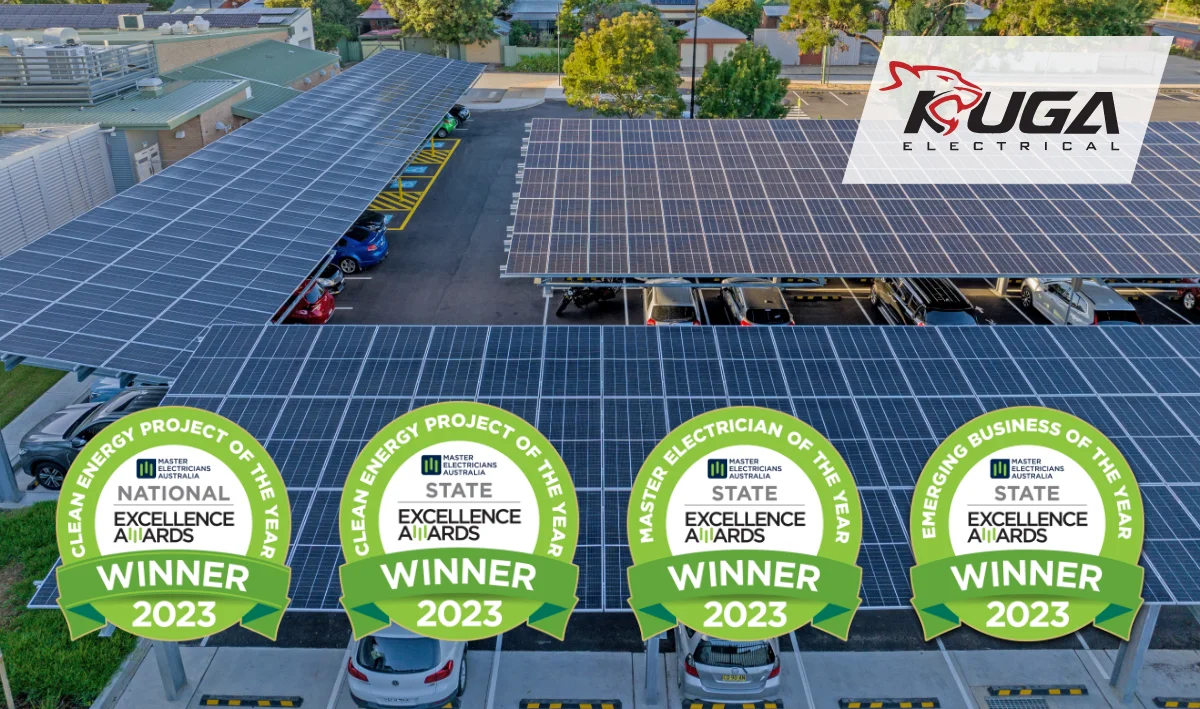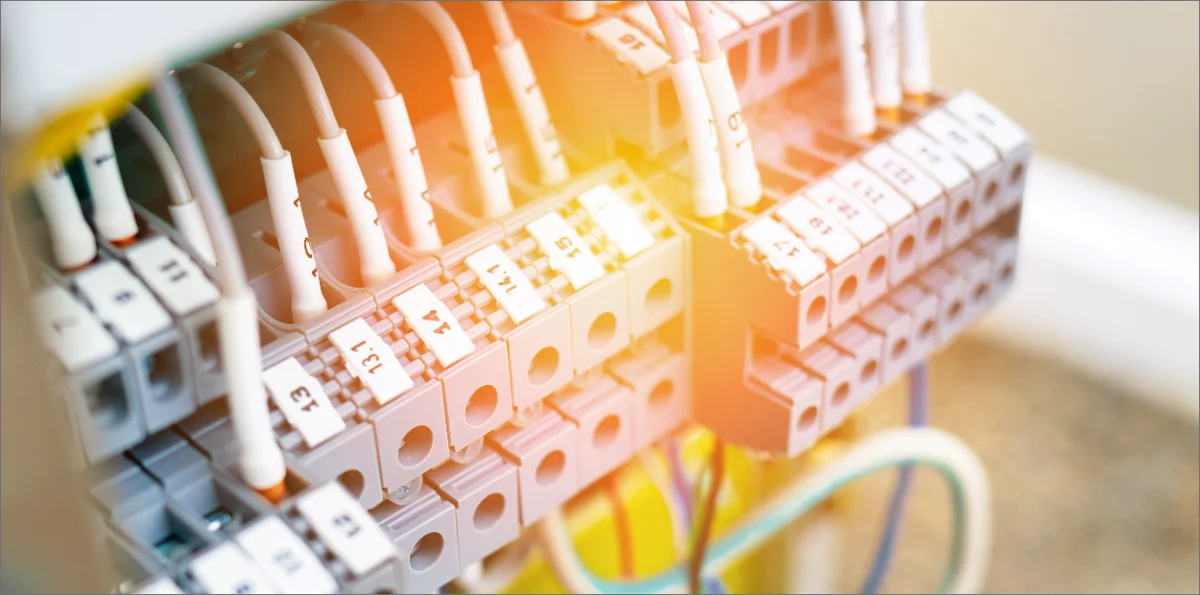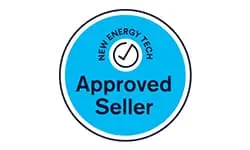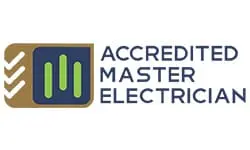As the world moves towards more sustainable energy solutions, solar batteries are becoming an increasingly popular choice for homeowners and businesses alike.
These batteries not only store the excess energy generated by solar panels for later use but also provide a reliable backup during power outages. However, understanding the lifespan of a solar battery is crucial for making an informed investment.
Whether you’re considering a solar battery for the first time or looking to optimise your current system, having all the information at hand is key to ensuring you get the best option.
In this comprehensive guide, we’ll explore the various factors that affect the longevity of solar batteries, the types of batteries available, and how to maximise their lifespan.
Understanding Solar Battery Lifespan
Solar batteries are designed to store energy produced by solar panels for use when the sun isn’t shining.
On average, the lifespan of solar batteries ranges between 5 to 25 years. This wide range is influenced by several factors, including the type of battery, its usage, and the environmental conditions it operates under.
Investing in a high-quality solar battery can ensure reliable performance and a longer lifespan, making it a crucial component of your solar energy system.
It’s important to understand the different types of solar batteries and their expected lifespans to make an informed decision that aligns with your energy needs and budget.
Key Factors Affecting Solar Battery Lifespan
Several critical factors influence how long a solar battery will last. By understanding these factors, you can take steps to maximise the lifespan and efficiency of your solar energy system.
Solar Battery Types
The type of battery you choose has a significant impact on its lifespan. Here are the most common types of solar batteries available:
Lead-Acid Batteries
Lead-acid batteries are the oldest type of solar battery and are known for their reliability and affordability. However, they typically have the shortest lifespan, ranging from 3 to 5 years. They are also heavier and require regular maintenance to ensure optimal performance. Due to their lower lifespan and maintenance requirements, they are often used in smaller, less demanding applications.
Lithium-Ion Batteries
Lithium-ion batteries have become the most popular choice for solar energy storage due to their longer lifespan and higher efficiency. They can last up to 15 years, making them a cost-effective and reliable option. Lithium-ion batteries have a higher energy density, which means they can store more energy in a smaller space. Additionally, they require less maintenance compared to lead-acid batteries, making them a convenient choice for many users.
Flow Batteries
Flow batteries are a newer technology in the solar battery market, offering a lifespan of 15 to 25 years. They work by pumping liquid electrolytes through electrochemical cells to store and discharge energy. Flow batteries have a 100% depth of discharge, meaning they can use their entire capacity without degrading their health. However, they are currently more expensive and are typically used in large-scale industrial applications due to their cost and complexity.
Depth of Discharge
The depth of discharge (DoD) refers to the percentage of the battery’s total capacity that can be used before it needs to be recharged. It is a crucial factor in determining the lifespan of a solar battery. Using a battery beyond its recommended DoD can significantly reduce its lifespan.
For example, lithium-ion batteries typically have a DoD of 80% to 95%. This means you can use up to 95% of the battery’s capacity without causing damage. In contrast, lead-acid batteries usually have a lower DoD, around 50%, meaning you should only use half of the battery’s capacity to avoid shortening its lifespan. Understanding and adhering to your battery’s DoD recommendations can help maintain its health and extend its usable life.
Cycle Life
The cycle life of a solar battery refers to the number of complete charge and discharge cycles it can perform before its capacity significantly degrades. Each cycle consists of one full discharge of the battery’s stored energy followed by a full recharge.
The cycle life is one of the most critical indicators of a battery’s longevity. For instance, lithium-ion batteries generally offer between 2,000 to 5,000 cycles, while lead-acid batteries might only provide 500 to 1,500 cycles. Flow batteries can exceed 10,000 cycles due to their unique technology. A higher cycle life means a longer lifespan for the battery, making it a key consideration when selecting a solar battery.
Installation Environment
Where you install your solar battery can significantly affect its lifespan. Batteries exposed to extreme temperatures, moisture, or direct sunlight are more likely to experience a reduction in performance and lifespan. Ideally, batteries should be installed in a controlled environment, such as a garage or a dedicated battery enclosure, to protect them from harsh weather conditions.
The optimal temperature range for most solar batteries is between 15°C and 30°C (59°F to 86°F). Temperatures outside this range can lead to reduced efficiency and faster degradation. Ensuring that your battery is installed in a suitable location can help maintain its performance and extend its lifespan.
Maintenance and Monitoring
Regular maintenance and monitoring are essential for maximising the lifespan of your solar battery. While modern batteries require less maintenance than older models, periodic checks can help identify potential issues before they become serious problems.
Most contemporary solar batteries come with monitoring systems that allow you to track their performance in real-time. These systems can alert you to any anomalies or declines in performance, enabling you to take corrective action promptly.
Regularly cleaning and inspecting the battery terminals, ensuring proper ventilation, and checking the battery’s health through monitoring apps can all contribute to a longer lifespan.
By understanding and managing these key factors, you can significantly extend the life of your solar battery, ensuring a reliable and efficient energy storage solution for your home or business.
Warranty and What to Look For
When investing in a solar battery, the warranty is a critical aspect to consider. Warranties provide a measure of assurance regarding the battery’s expected performance and longevity. Typically, solar batteries come with a warranty period ranging from 5 to 15 years, depending on the type and manufacturer.
Key Elements of a Solar Battery Warranty
- Duration: Most lithium-ion batteries come with a warranty of at least 10 years. Lead-acid batteries often have shorter warranties due to their shorter lifespans.
- Cycle Count: Warranties usually specify the number of charge-discharge cycles covered. A higher cycle count indicates a longer-lasting battery.
- Performance Guarantee: Some warranties include a performance guarantee, ensuring the battery retains a certain percentage of its original capacity over the warranty period. For example, a warranty might guarantee that the battery will retain 80% of its capacity after 10 years.
- Pro-Rated Terms: Many warranties are pro-rated, meaning the coverage diminishes over time. If a battery fails after half the warranty period, you might receive a partial refund or replacement based on the remaining value.
Before purchasing a solar battery, carefully review the warranty terms. Ensure that it covers both performance and manufacturing defects, and understand how claims are handled. A comprehensive warranty reflects the manufacturer’s confidence in their product and provides peace of mind for the buyer.
Deep Cycle Batteries Explained
Deep cycle batteries are designed to be regularly deeply discharged using most of their capacity. They differ from regular batteries, which are designed to deliver short bursts of energy (such as starting a car) and then be recharged.
Characteristics of Deep Cycle Batteries
- High Depth of Discharge (DoD): Deep cycle batteries can discharge 80% or more of their capacity without significantly affecting their lifespan. This makes them ideal for solar energy storage, where the goal is to maximize the use of stored energy.
- Durability: These batteries are built to withstand repeated deep discharges and recharges, making them more durable than traditional batteries.
- Applications: Commonly used in renewable energy systems, electric vehicles, and marine applications, deep cycle batteries are versatile and reliable.
While the term “deep cycle” used to differentiate battery types, advancements in technology mean that most modern solar batteries, especially lithium-ion, are now deep cycle by nature. This characteristic ensures they can provide consistent and reliable energy storage for solar systems.
Solar Batteries vs. Solar Panels
Solar panels and solar batteries work together to create a complete solar energy system, but they have different lifespans and functions.
Lifespan Comparison
- Solar Panels: Typically last between 20 to 30 years. They convert sunlight into electricity but do not store it.
- Solar Batteries: Generally last up to 15 years, with their lifespan influenced by the factors discussed earlier. They store the energy produced by solar panels for use when the sun is not shining.
Installation and Maintenance
- Solar Panels: Require minimal maintenance. Their long lifespan means they often outlast the batteries they charge.
- Solar Batteries: Require regular monitoring and occasional maintenance to ensure optimal performance.
The disparity in lifespans highlights the importance of selecting durable, high-quality batteries and ensuring they are properly maintained to maximize their useful life.
Maximizing Your Solar Battery’s Lifespan
To get the most out of your solar battery, follow these best practices:
- Choose the Right Battery: Select a high-quality battery with a good warranty and a high cycle life.
- Optimal Installation: Ensure the battery is installed in a suitable environment, protected from extreme temperatures and weather conditions.
- Regular Maintenance: Monitor the battery’s performance using available apps and conduct periodic inspections.
- Adhere to DoD Guidelines: Use the battery within its recommended depth of discharge to prevent excessive wear.
- Professional Installation: Have your system installed by qualified professionals to ensure it operates efficiently and safely.
Deep Cycle Batteries Explained
Deep cycle batteries are specifically designed to provide sustained power over a long period. Unlike traditional batteries, which deliver short bursts of energy (like starting a car), deep cycle batteries are built to be regularly and deeply discharged, using most of their capacity before recharging.
Characteristics of Deep Cycle Batteries
- High Depth of Discharge (DoD): Deep cycle batteries can discharge 80% or more of their capacity without significantly affecting their lifespan. This makes them ideal for solar energy storage, where maximizing the use of stored energy is crucial.
- Durability: These batteries are constructed to withstand repeated deep discharges and recharges. Their robust design ensures they remain reliable over many cycles, making them a durable choice for long-term energy storage.
- Applications: Deep cycle batteries are commonly used in renewable energy systems, electric vehicles, marine applications, and other settings where reliable, sustained energy is needed.
Types of Deep Cycle Batteries
- Lead-Acid Batteries: These are the oldest and most affordable type of deep cycle batteries. However, they have shorter lifespans and lower efficiency compared to newer technologies.
- Lithium-Ion Batteries: These batteries have a higher energy density, longer lifespan, and greater efficiency. They are becoming the preferred choice for many solar energy systems.
- Flow Batteries: Utilizing liquid electrolytes, flow batteries offer a long lifespan and high DoD. They are suitable for large-scale energy storage but are typically more expensive and complex.
Importance in Solar Energy Systems
Deep cycle batteries play a vital role in solar energy systems by storing the energy produced during the day for use at night or during cloudy periods. This capability ensures a continuous power supply, enhancing the reliability and efficiency of solar energy systems.
While the term “deep cycle” was initially used to differentiate these robust batteries from those designed for short-term use, advancements in technology have made most modern solar batteries inherently deep cycle. This ensures they can handle the demands of daily charging and discharging, providing consistent and reliable energy storage for solar applications
Solar Batteries vs. Solar Panels
Solar panels and solar batteries are essential components of a solar energy system, but they serve different purposes and have distinct lifespans and maintenance needs.
Lifespan Comparison
- Solar Panels: Solar panels typically last between 20 to 30 years. They are designed to convert sunlight into electricity efficiently over a long period with minimal degradation. Most solar panels come with warranties that guarantee performance for at least 25 years.
- Solar Batteries: Solar batteries, on the other hand, generally have a lifespan of up to 15 years, depending on the type and usage. Factors such as depth of discharge, cycle life, and maintenance significantly influence their longevity.
Installation and Maintenance
- Solar Panels: Require minimal maintenance. Once installed, they mainly need occasional cleaning to remove dust and debris that might reduce their efficiency. The robust design of modern solar panels ensures they withstand various weather conditions with little to no intervention.
- Solar Batteries: Require more regular monitoring and occasional maintenance to ensure optimal performance. This includes checking the battery’s health, ensuring proper ventilation, and using monitoring apps to track performance. Proper installation in a suitable environment is crucial to prevent overheating and other issues that could shorten their lifespan.
Functionality and Role in the System
- Solar Panels: Solar panels generate electricity from sunlight but do not store it. They are the primary source of renewable energy in a solar power system.
- Solar Batteries: Store the excess energy generated by solar panels for use when sunlight is not available, such as at night or during cloudy days. They provide a reliable backup power source, ensuring a continuous energy supply.
Importance of Choosing Quality Components
Given that solar panels have a longer lifespan than solar batteries, it’s essential to choose high-quality batteries that match the durability of the panels. Investing in reliable batteries and ensuring proper installation and maintenance can maximize the overall efficiency and lifespan of your solar energy system.
By understanding the differences between solar panels and solar batteries, you can make informed decisions about your solar energy system. This knowledge helps ensure that both components work together seamlessly to provide sustainable, reliable energy for your home or business.
Maximizing Your Solar Battery’s Lifespan
To get the most out of your solar battery, it is essential to follow best practices for installation, maintenance, and usage. Here are some key tips to help you maximize the lifespan of your solar battery:
Choose the Right Battery
- Quality Over Cost: Investing in a high-quality battery from a reputable manufacturer can save you money in the long run. Quality batteries often come with better warranties and longer lifespans.
- Suitable Type: Select a battery type that fits your energy needs and usage patterns. Lithium-ion batteries, for example, are known for their long lifespan and efficiency, making them a popular choice for residential and commercial solar systems.
Optimal Installation
- Professional Installation: Ensure your battery is installed by qualified professionals who follow the manufacturer’s guidelines. Proper installation is crucial for safe and efficient operation.
- Ideal Environment: Install your battery in a controlled environment that protects it from extreme temperatures and weather conditions. A well-ventilated indoor space, like a garage, is often ideal.
Regular Maintenance
- Monitor Performance: Use monitoring systems and apps to keep track of your battery’s performance. Regularly checking the battery’s health can help you identify and address issues early.
- Scheduled Inspections: Perform periodic inspections of the battery terminals and connections to ensure they are clean and secure. This can prevent potential problems and maintain optimal performance.
- Firmware Updates: If your battery system includes software, ensure it is updated regularly. Firmware updates can improve performance and fix potential issues.
Adhere to DoD Guidelines
- Recommended DoD: Follow the manufacturer’s recommended depth of discharge (DoD) to avoid overusing the battery’s capacity. For example, if your battery has a DoD of 90%, avoid discharging it beyond that level.
- Automatic Settings: Many modern batteries come with settings that automatically manage the DoD to optimize the lifespan. Ensure these settings are correctly configured.
Avoid Overcharging and Deep Discharging
- Balanced Usage: Avoid consistently overcharging or deeply discharging your battery. Both extremes can stress the battery and reduce its lifespan.
- Smart Controllers: Use smart controllers that manage the charging and discharging cycles efficiently, preventing overcharging and deep discharging.
Professional Check-Ups
- Annual Service: Schedule an annual service with a professional to conduct a thorough check-up of your entire solar power system, including the battery. This can help detect and address issues that may not be apparent through regular monitoring.
By following these best practices, you can significantly extend the life of your solar battery, ensuring that your solar energy system remains reliable and efficient for many years. Regular maintenance, proper installation, and smart usage are key to maximizing the return on your investment in solar energy.
Conclusion
Understanding the factors that affect the lifespan of solar batteries can help you make informed decisions and maximize the return on your investment.
By choosing high-quality batteries, following best practices for installation and maintenance, and monitoring performance regularly, you can ensure your solar energy system provides reliable power for many years.
Solar batteries are an integral part of modern solar energy systems, offering the ability to store and use renewable energy efficiently. With the right care and attention, these batteries can provide long-term benefits, including cost savings, energy independence, and environmental sustainability.
If you’re considering a solar battery system or looking to optimize your existing setup, contact us for expert advice and professional installation services.


















 Get Quote
Get Quote Call Now
Call Now